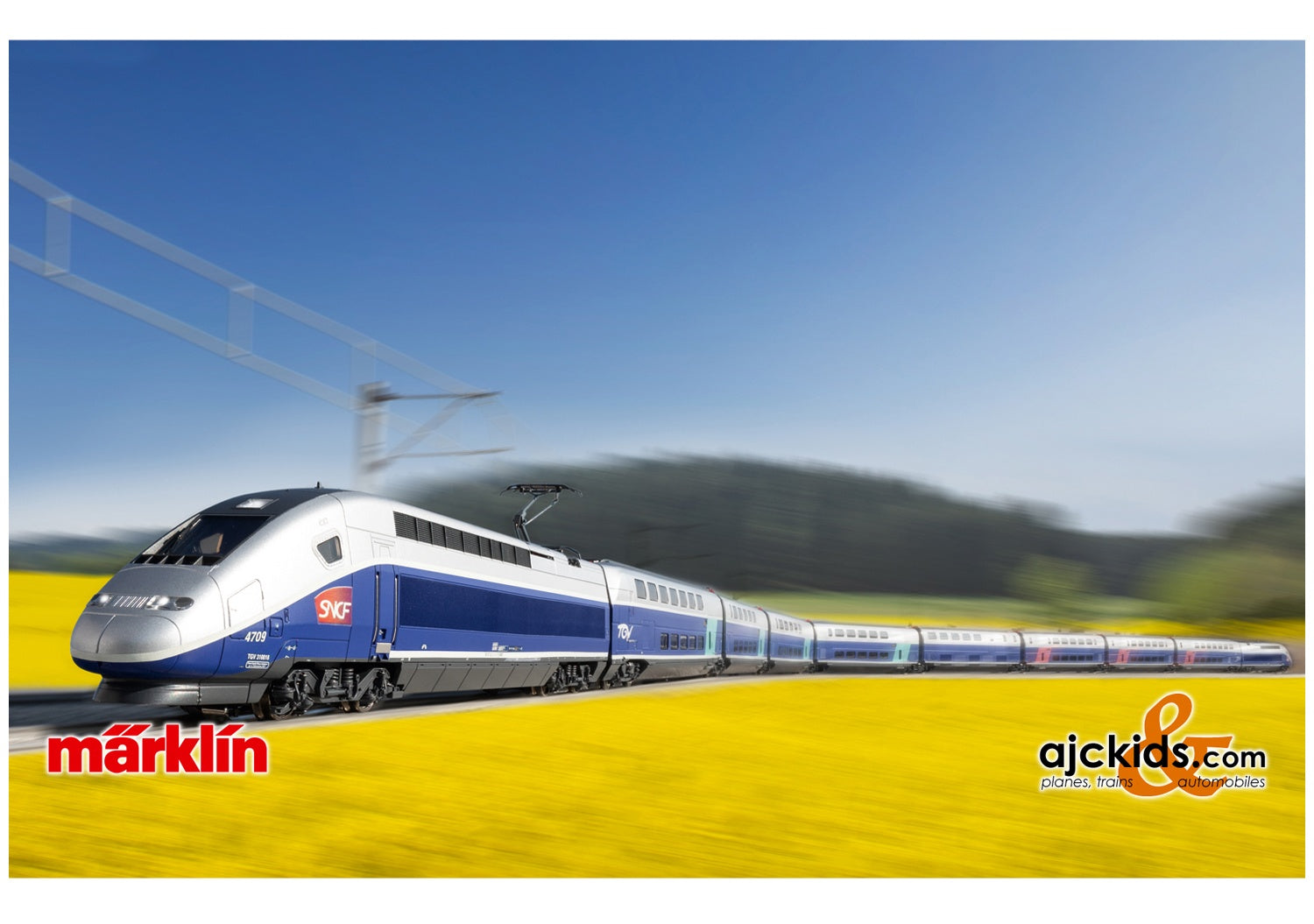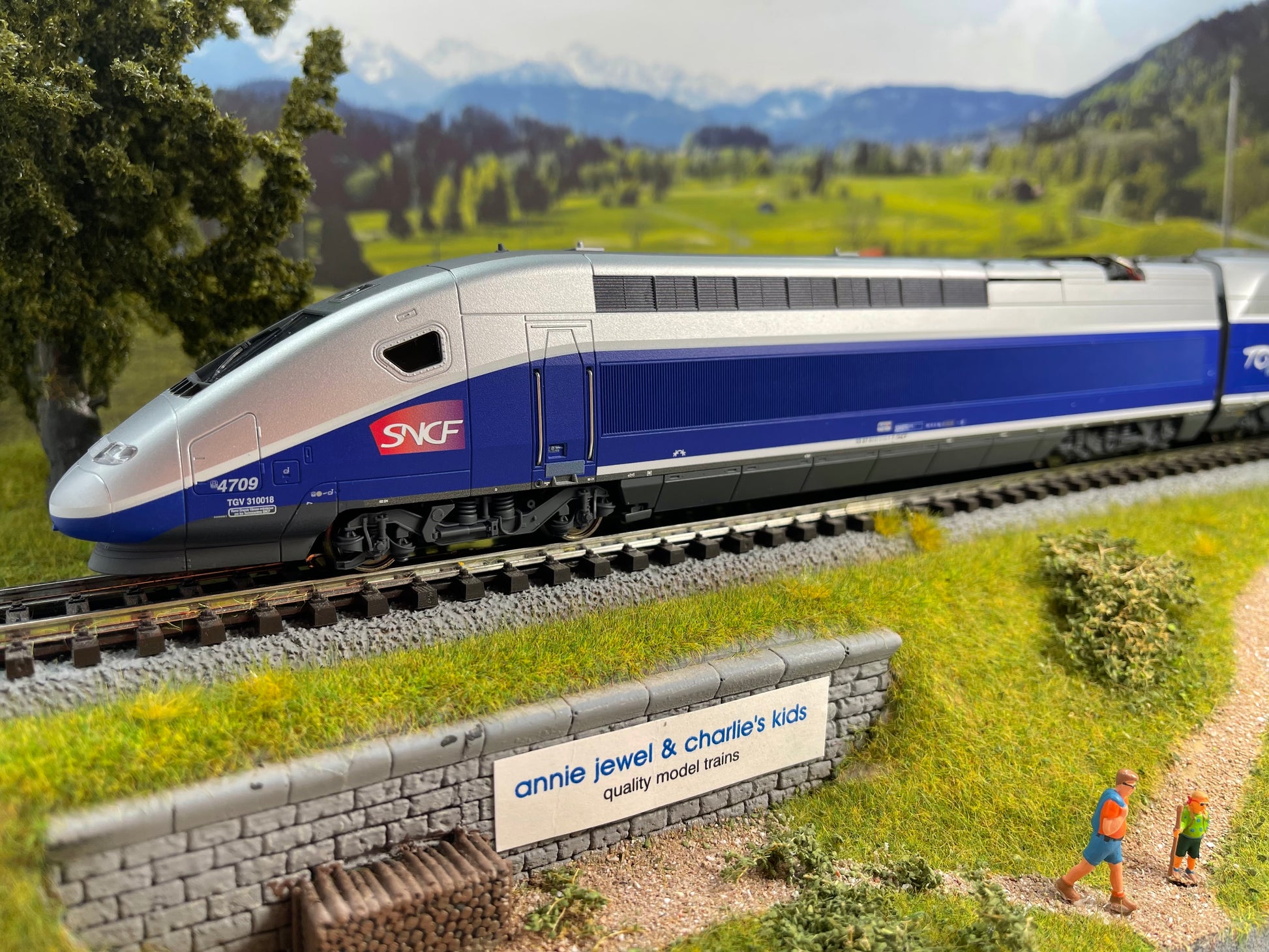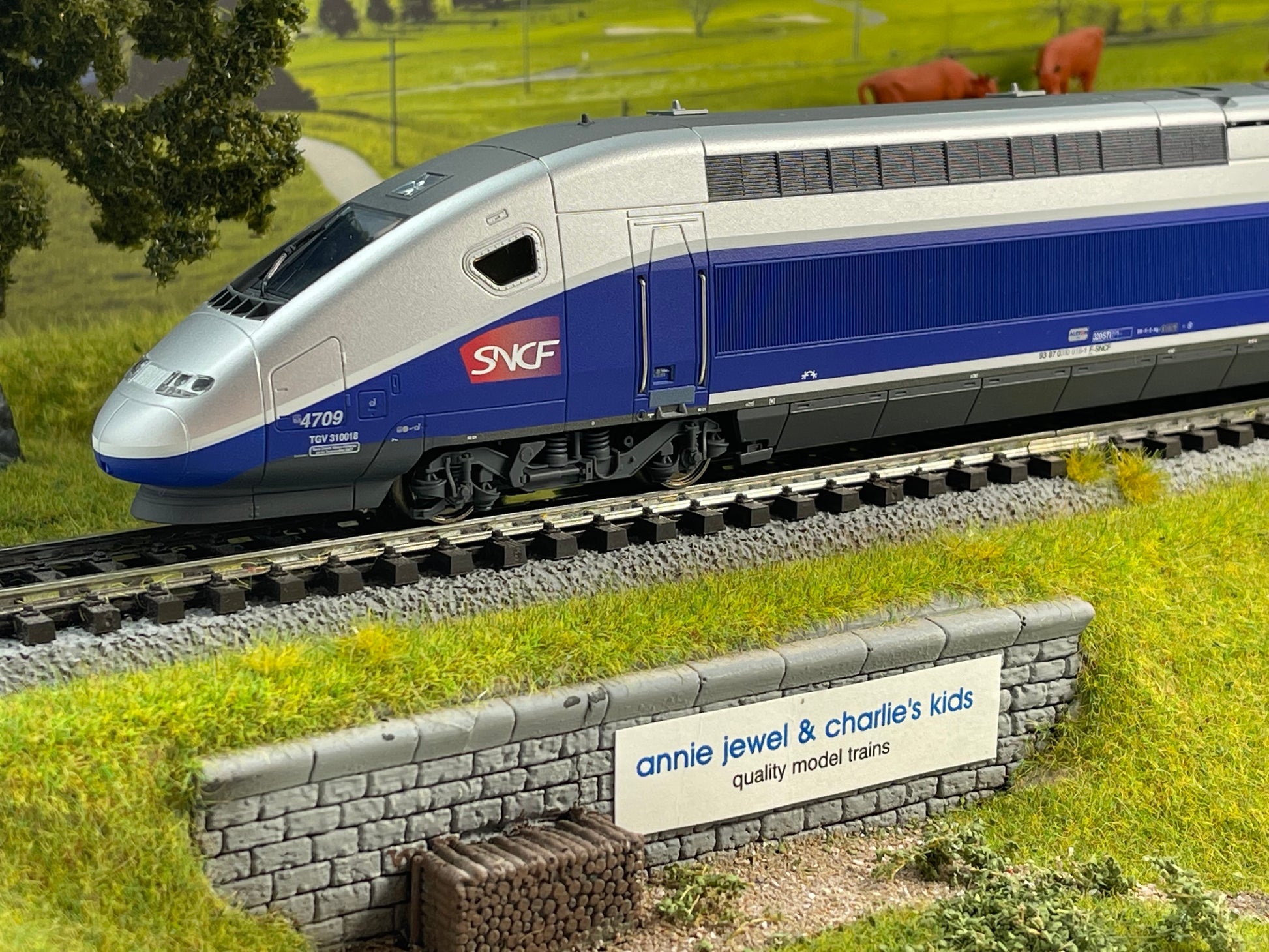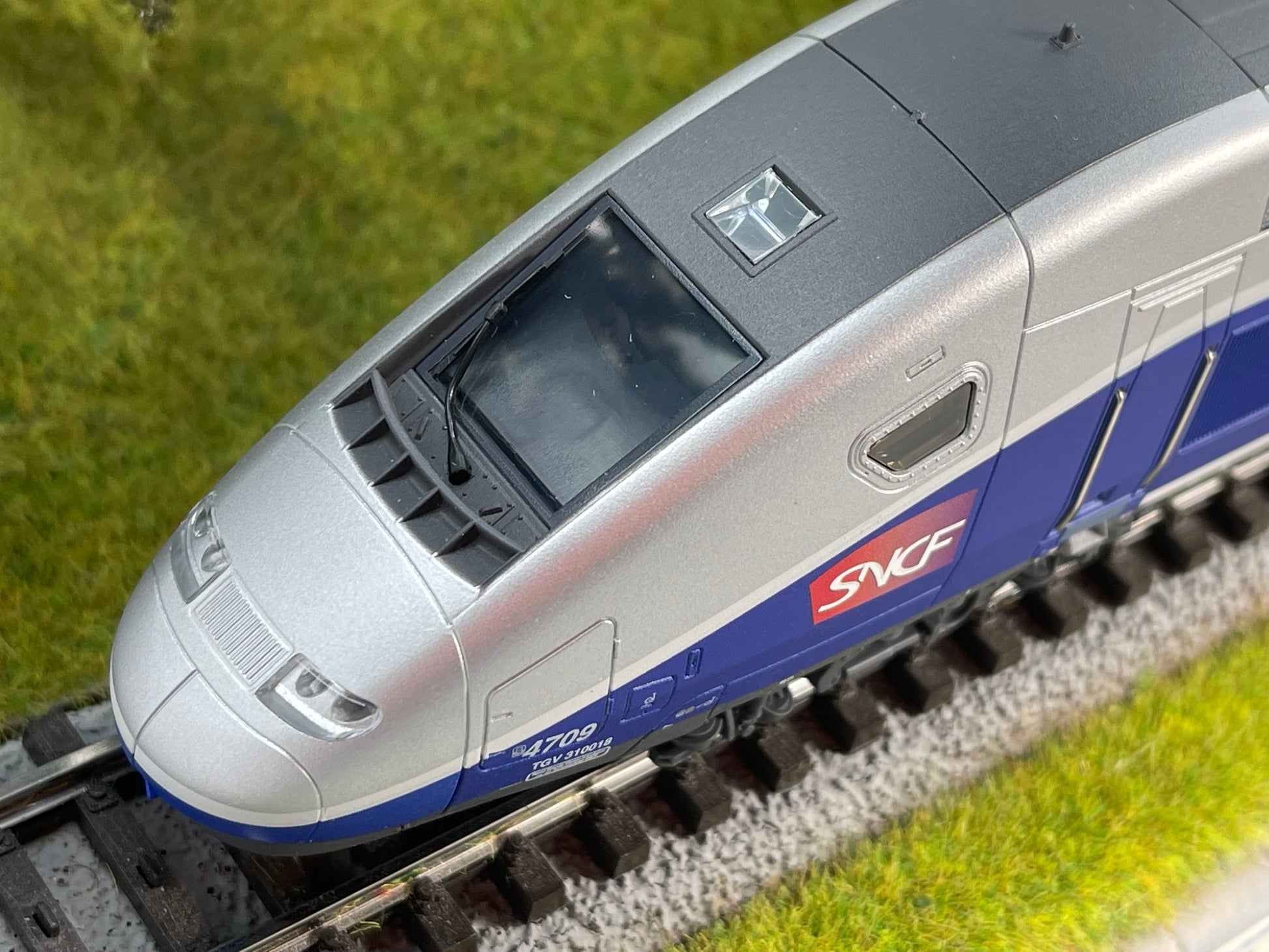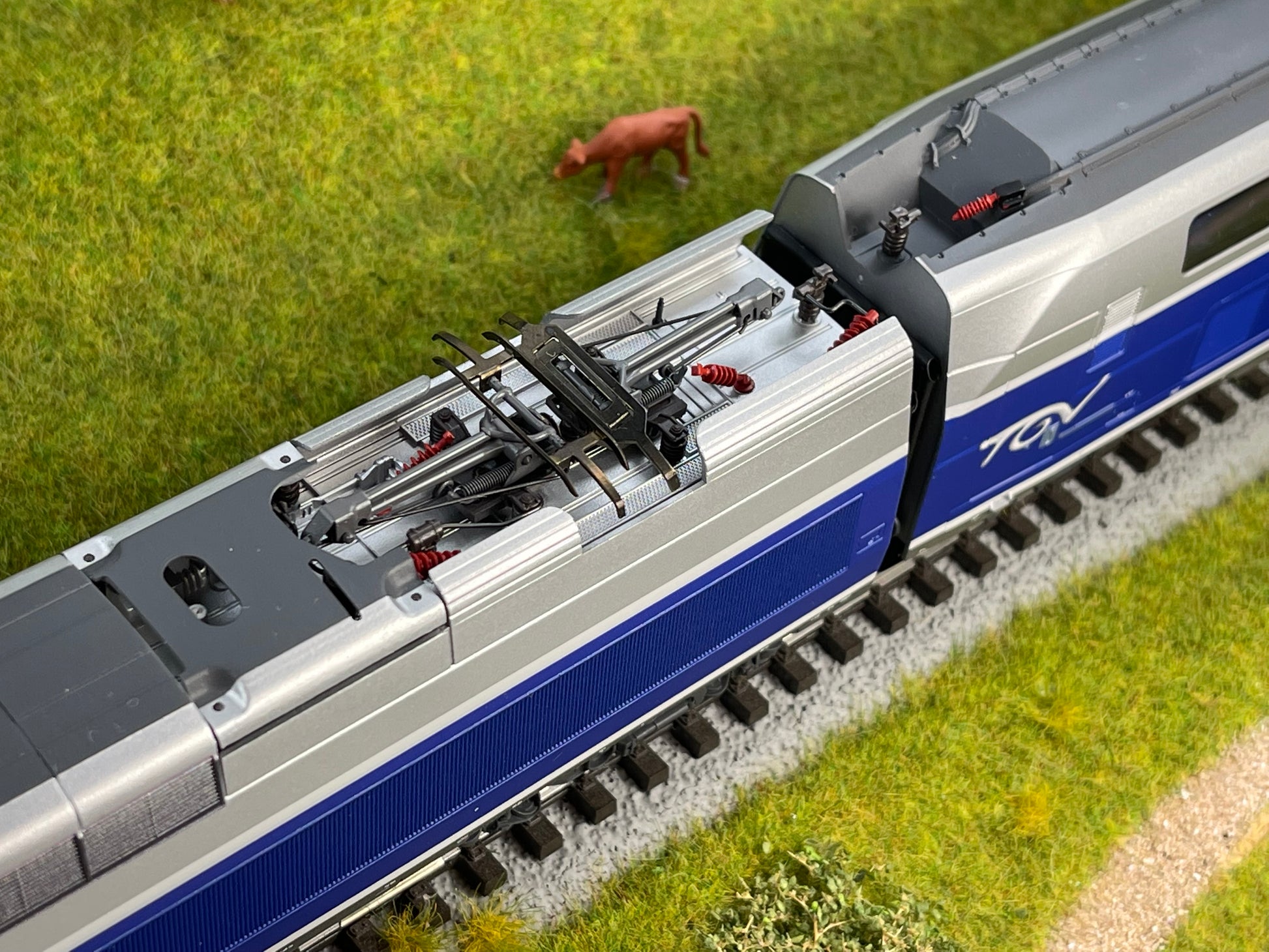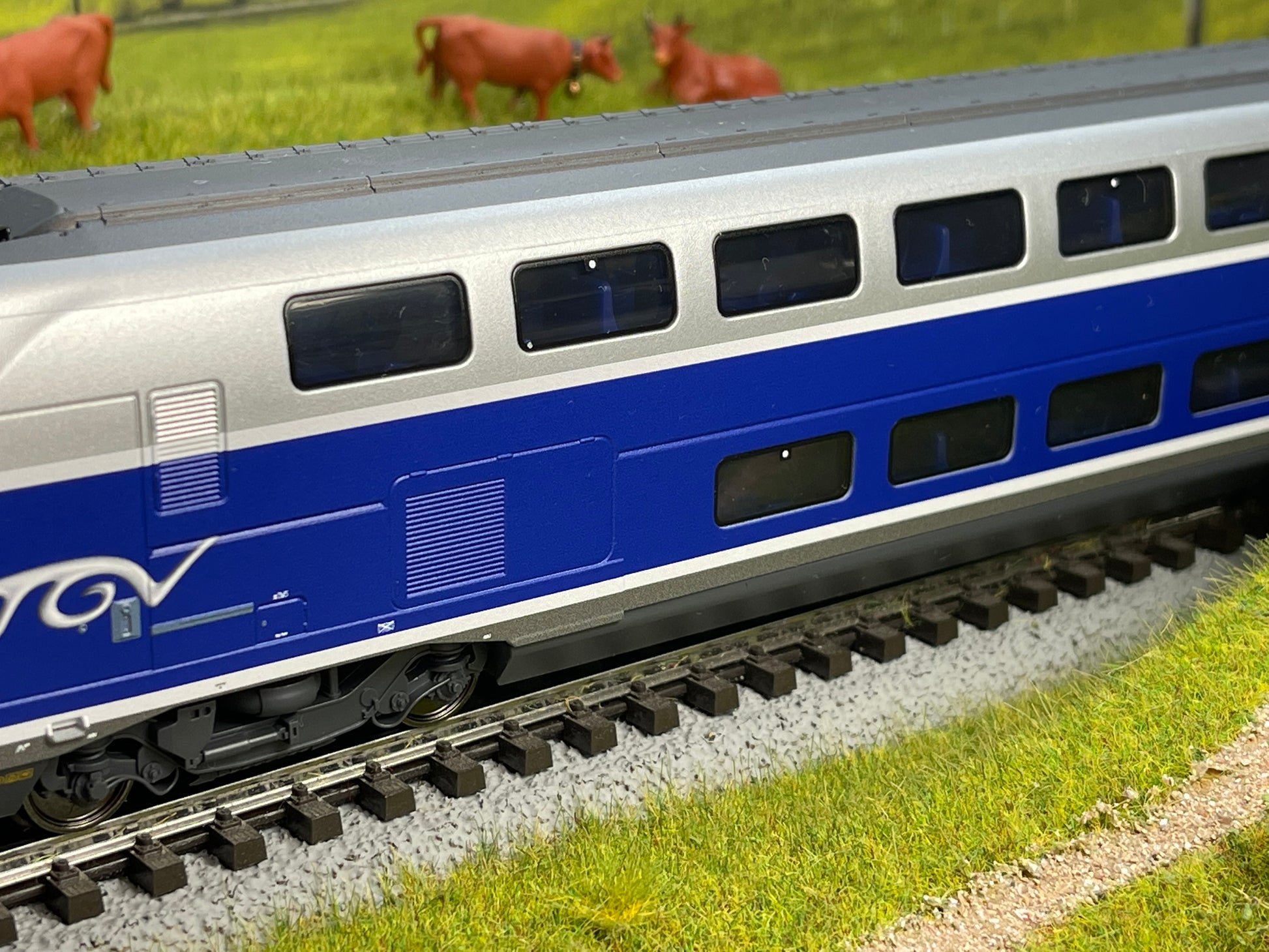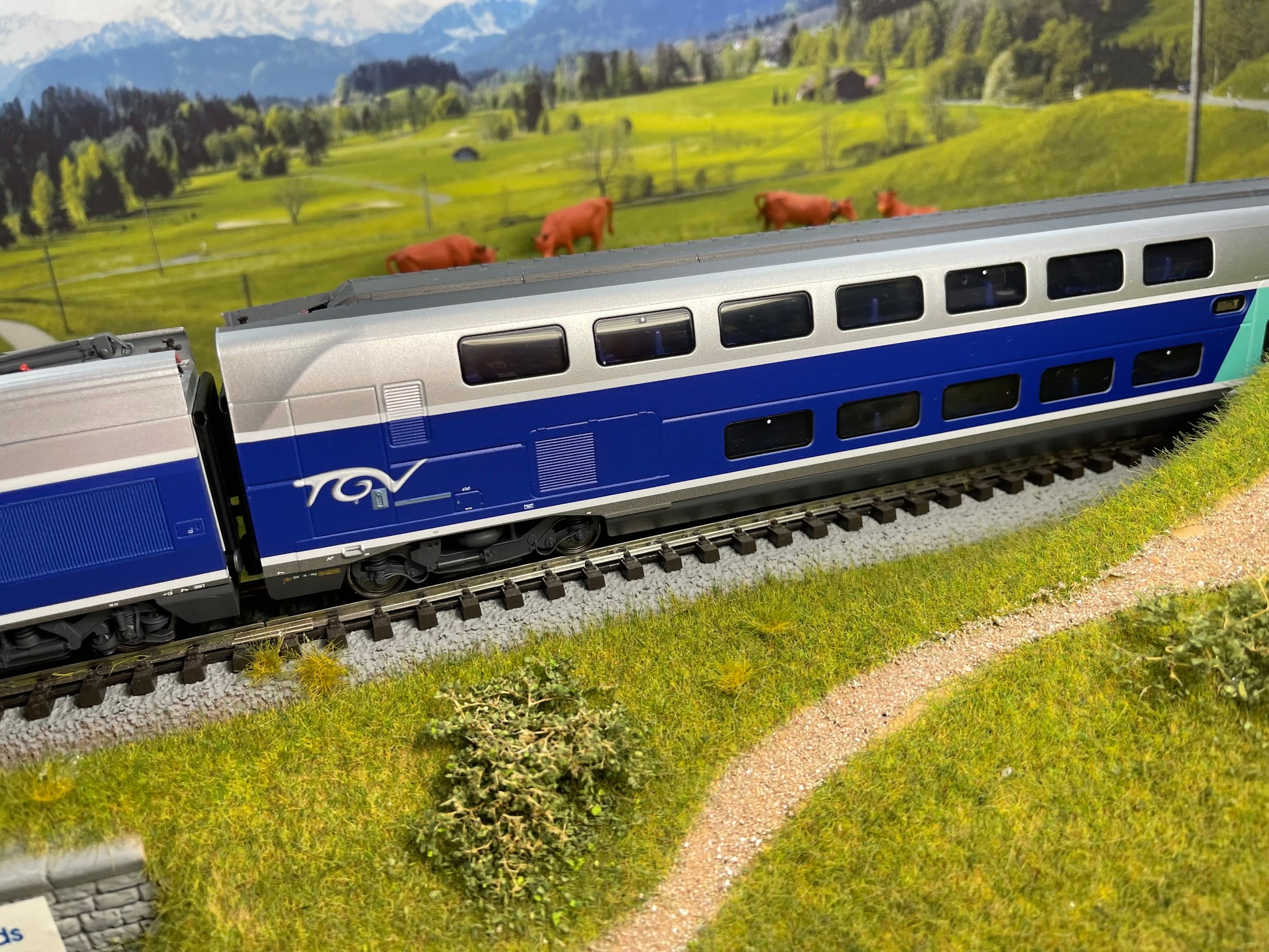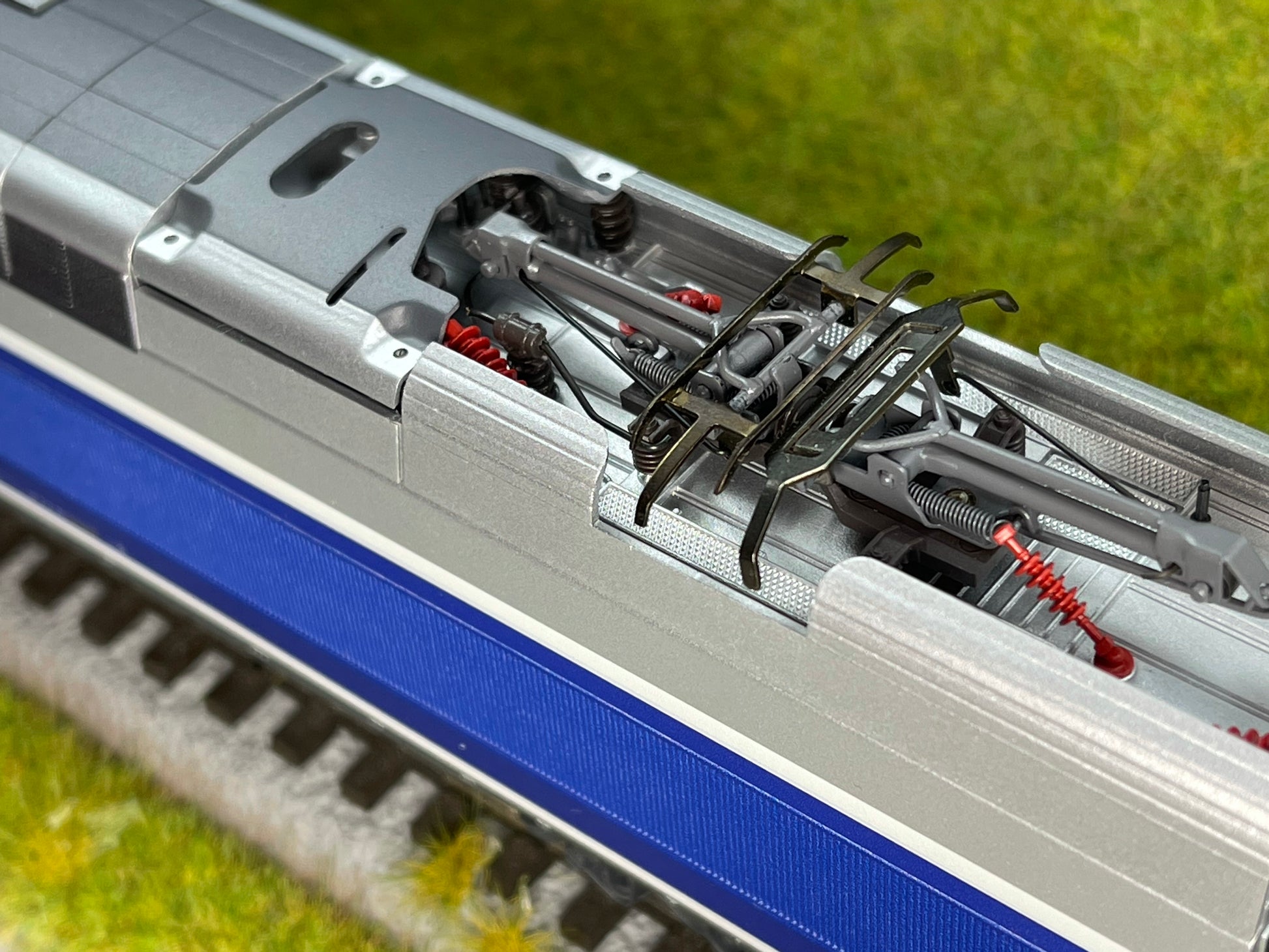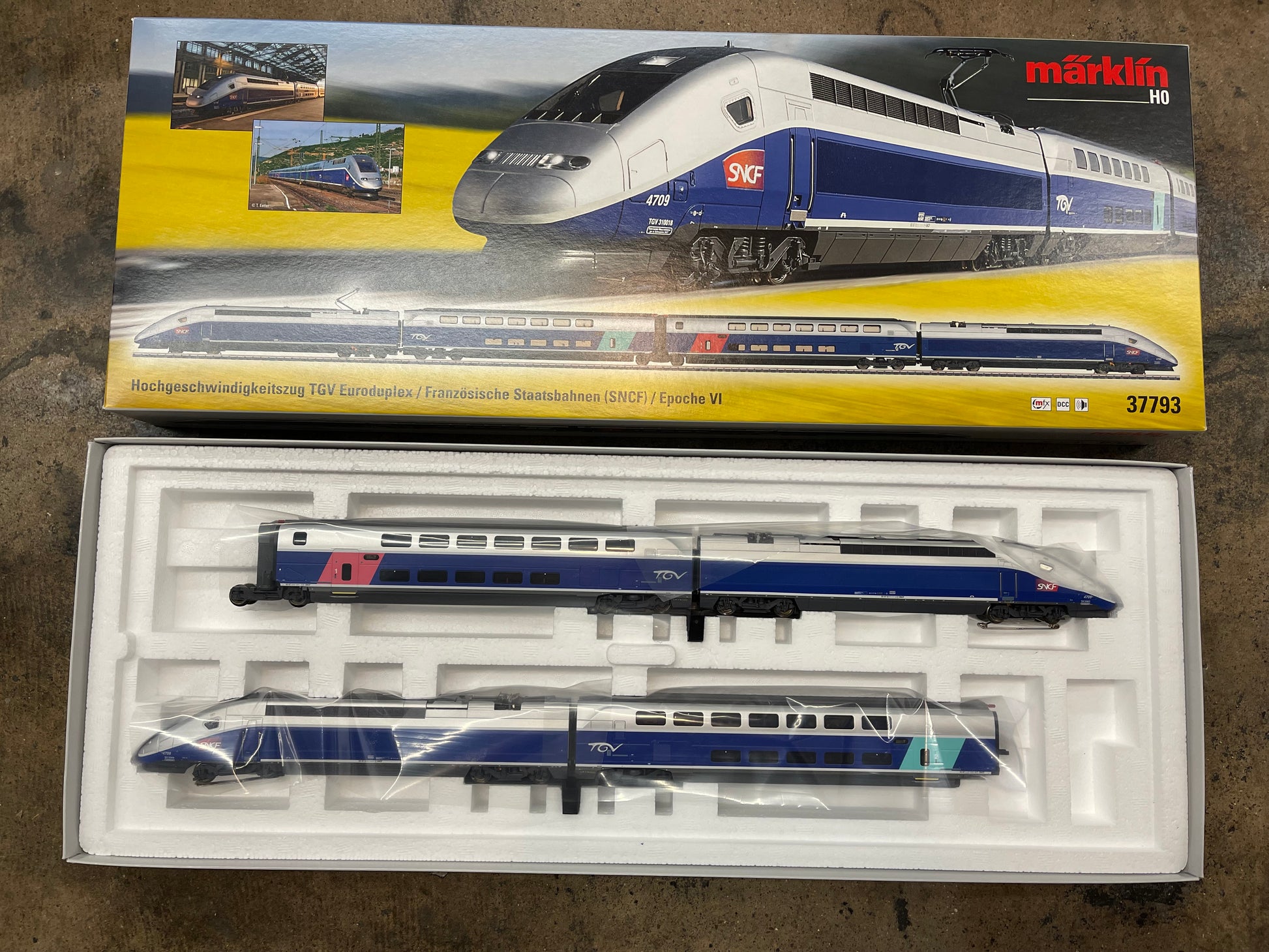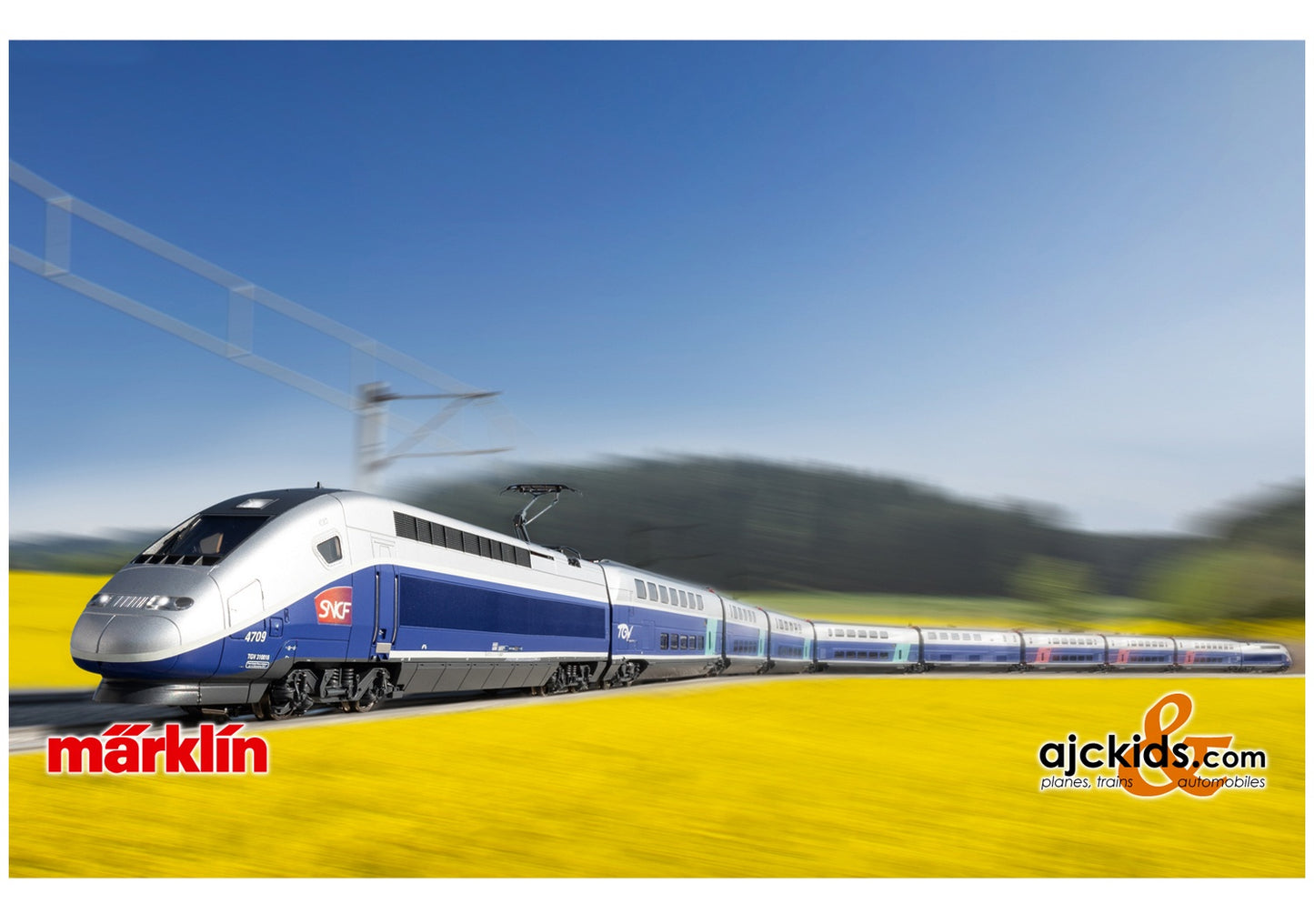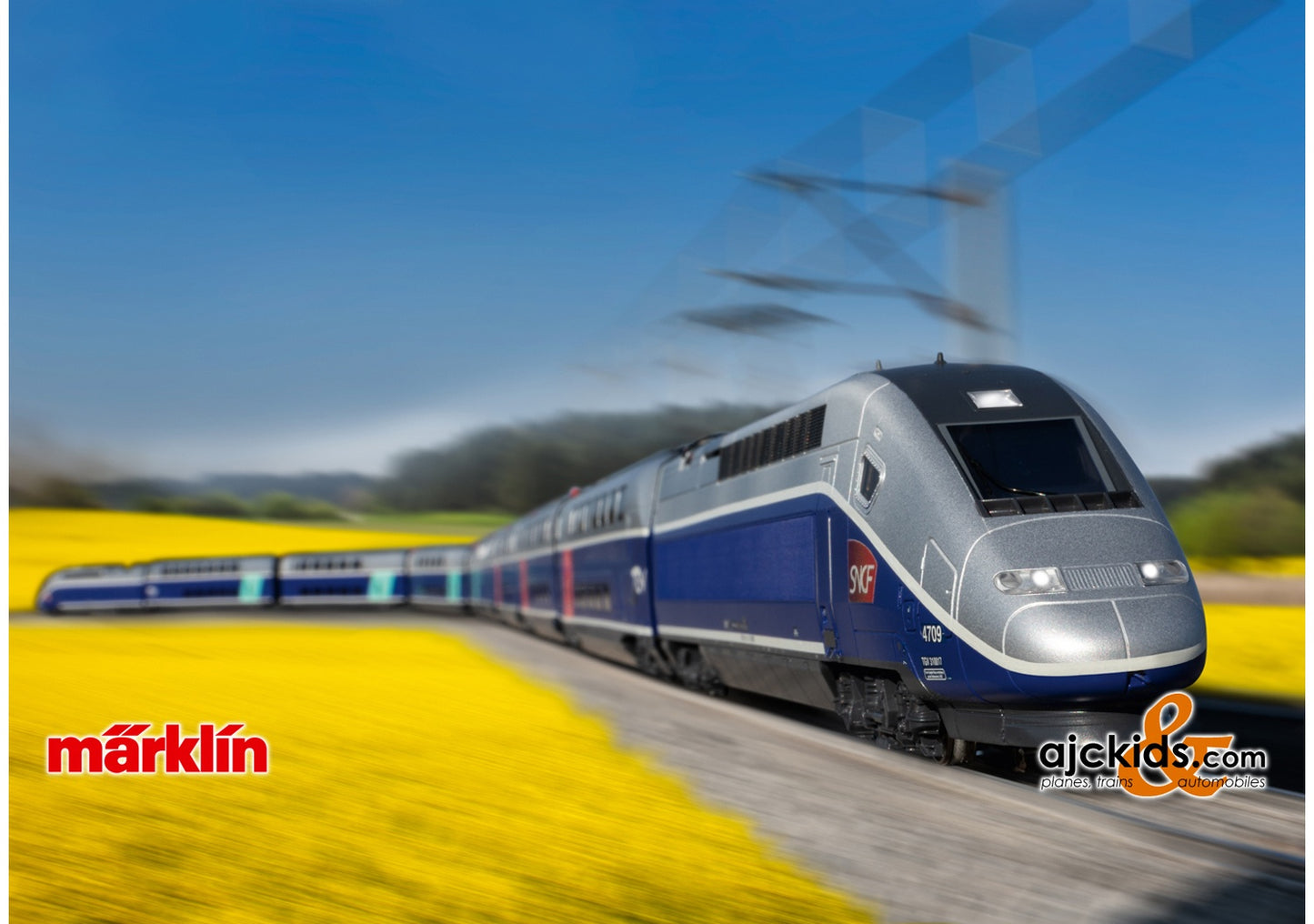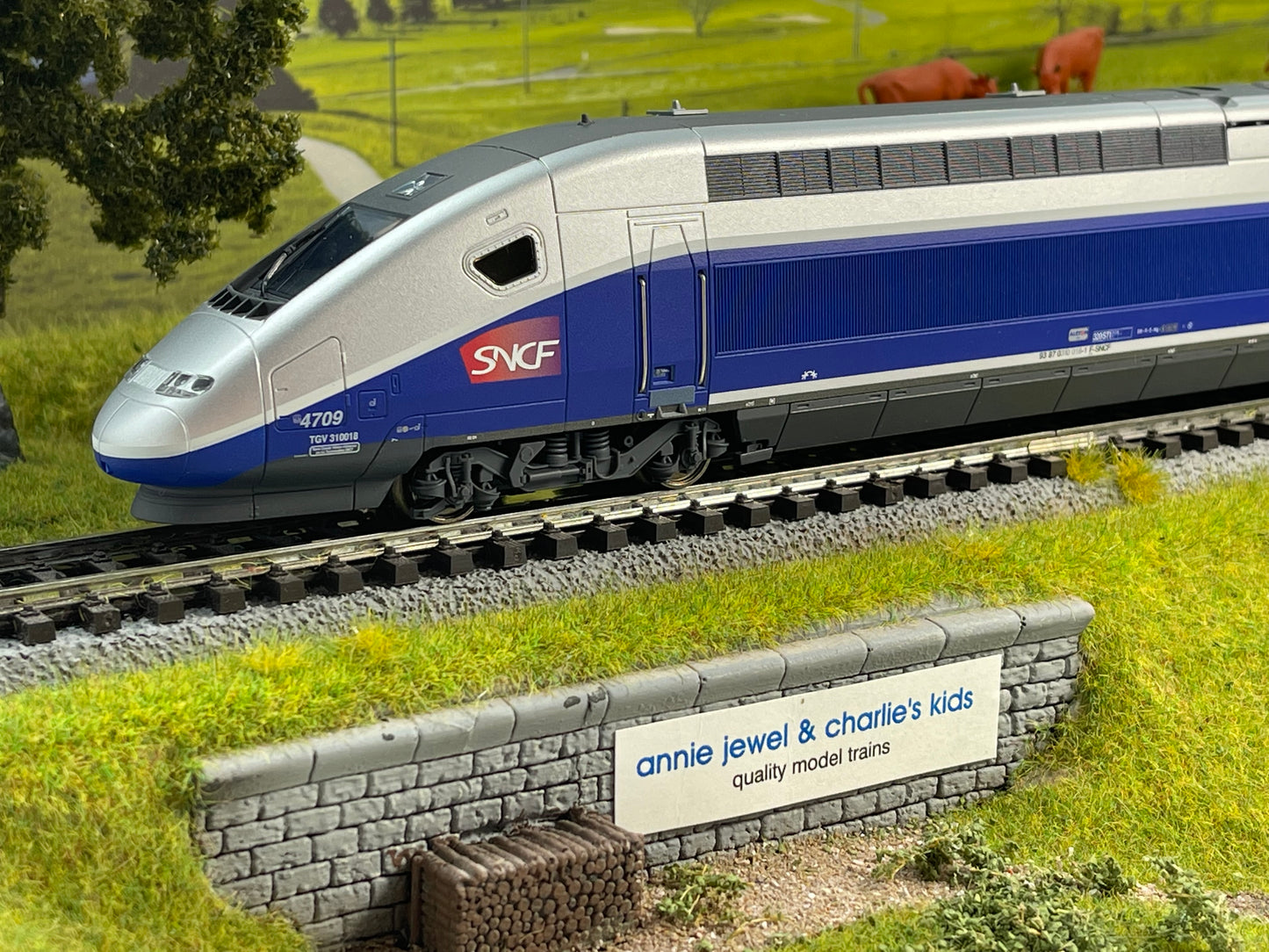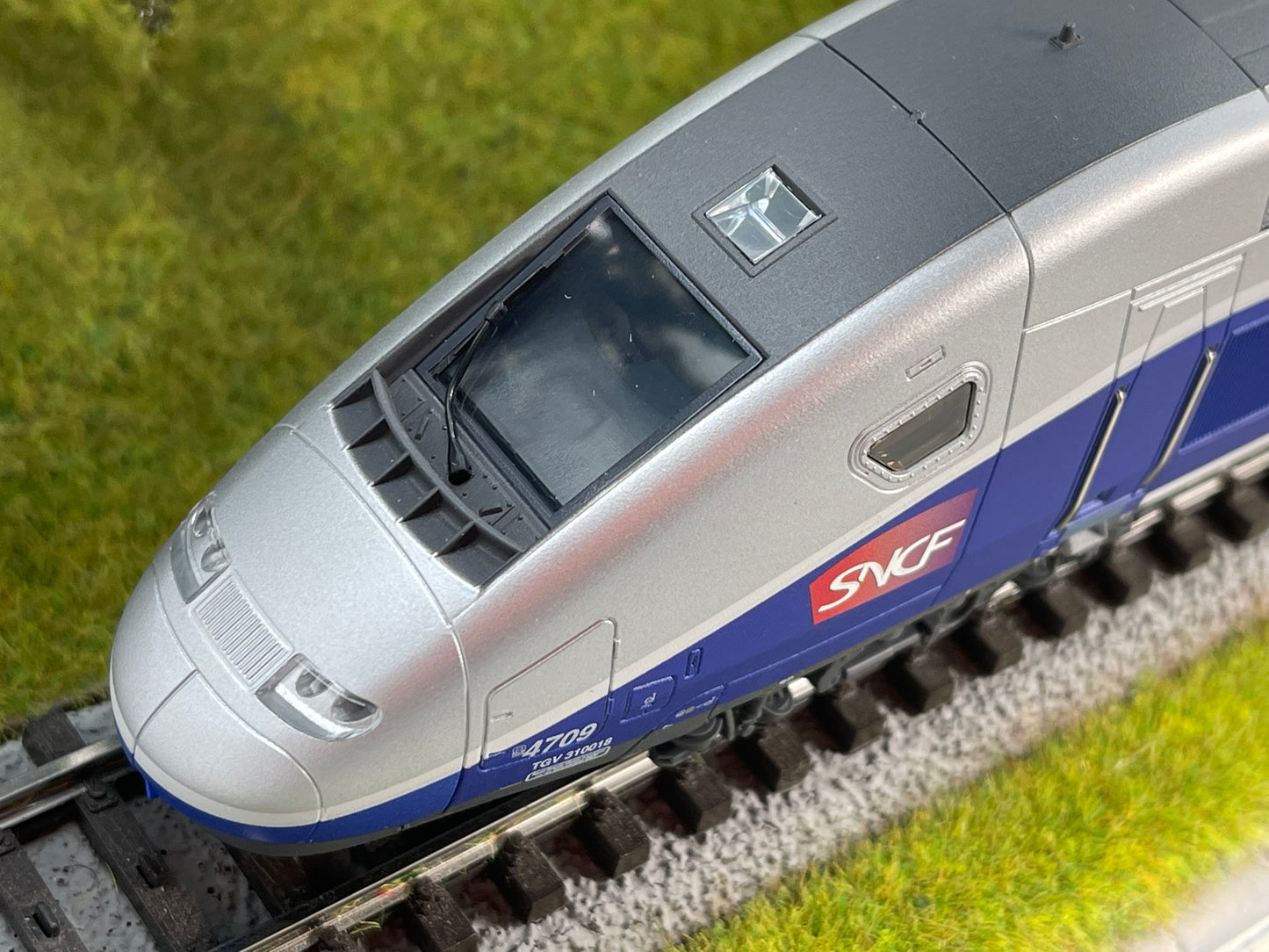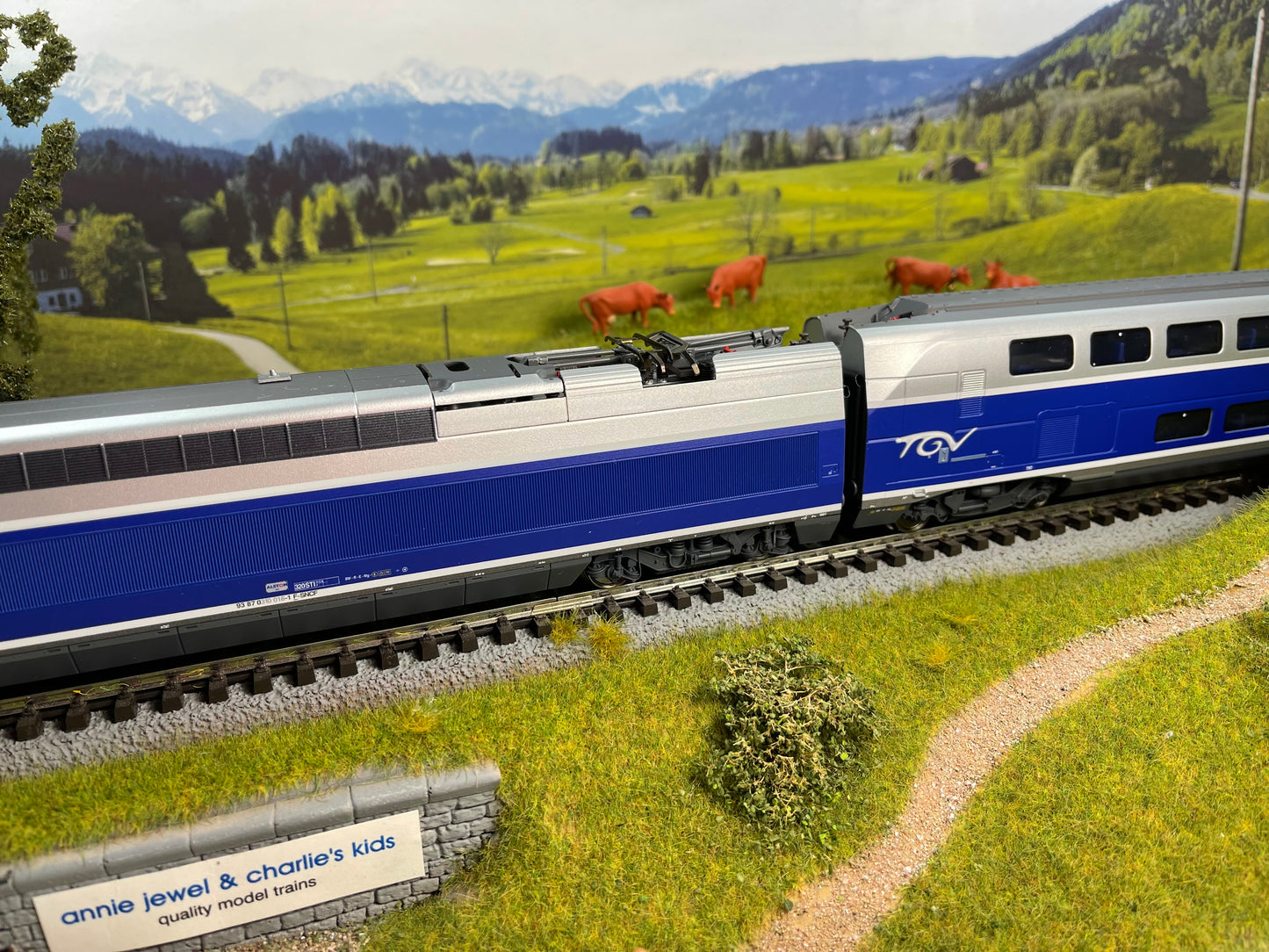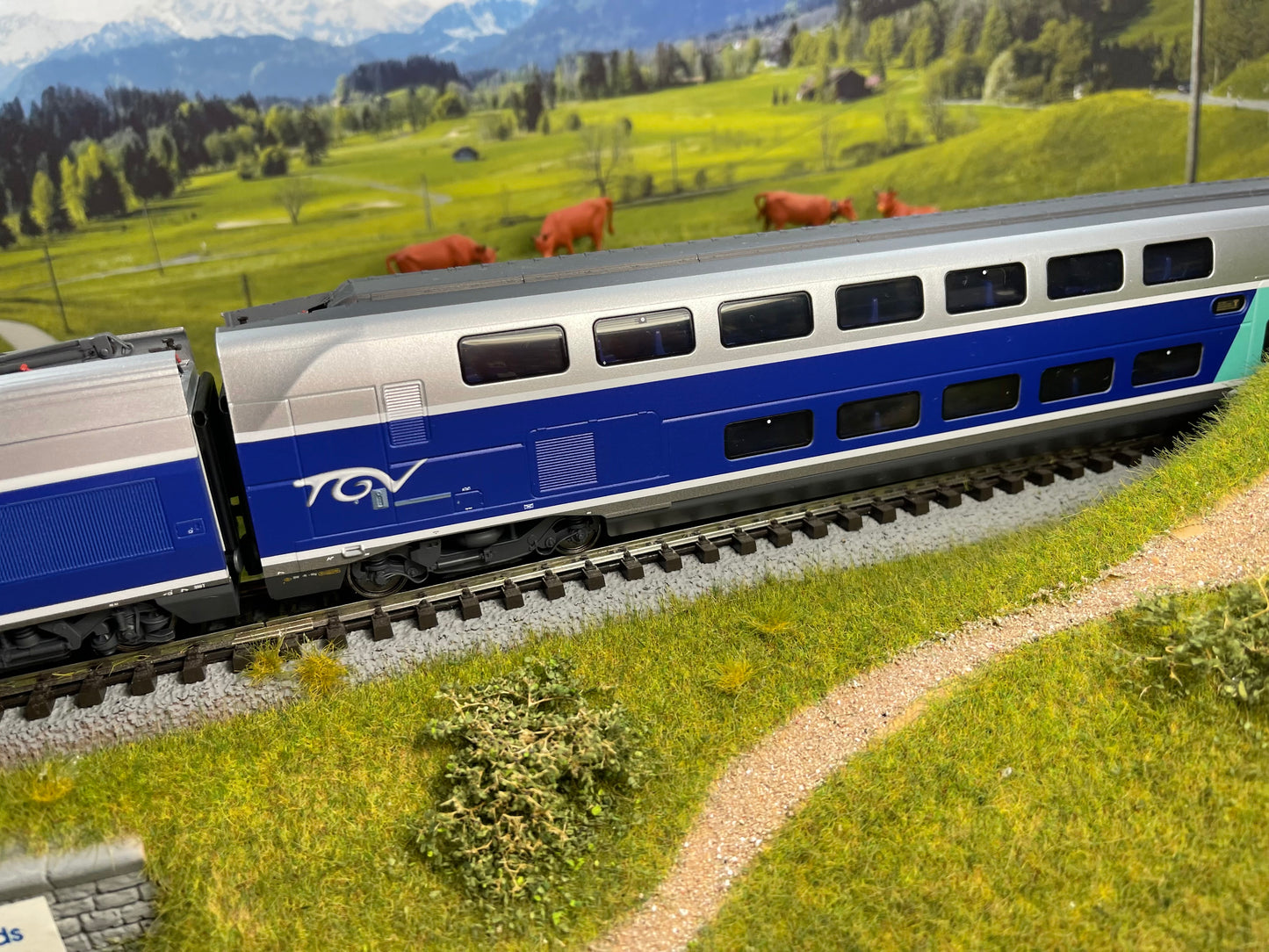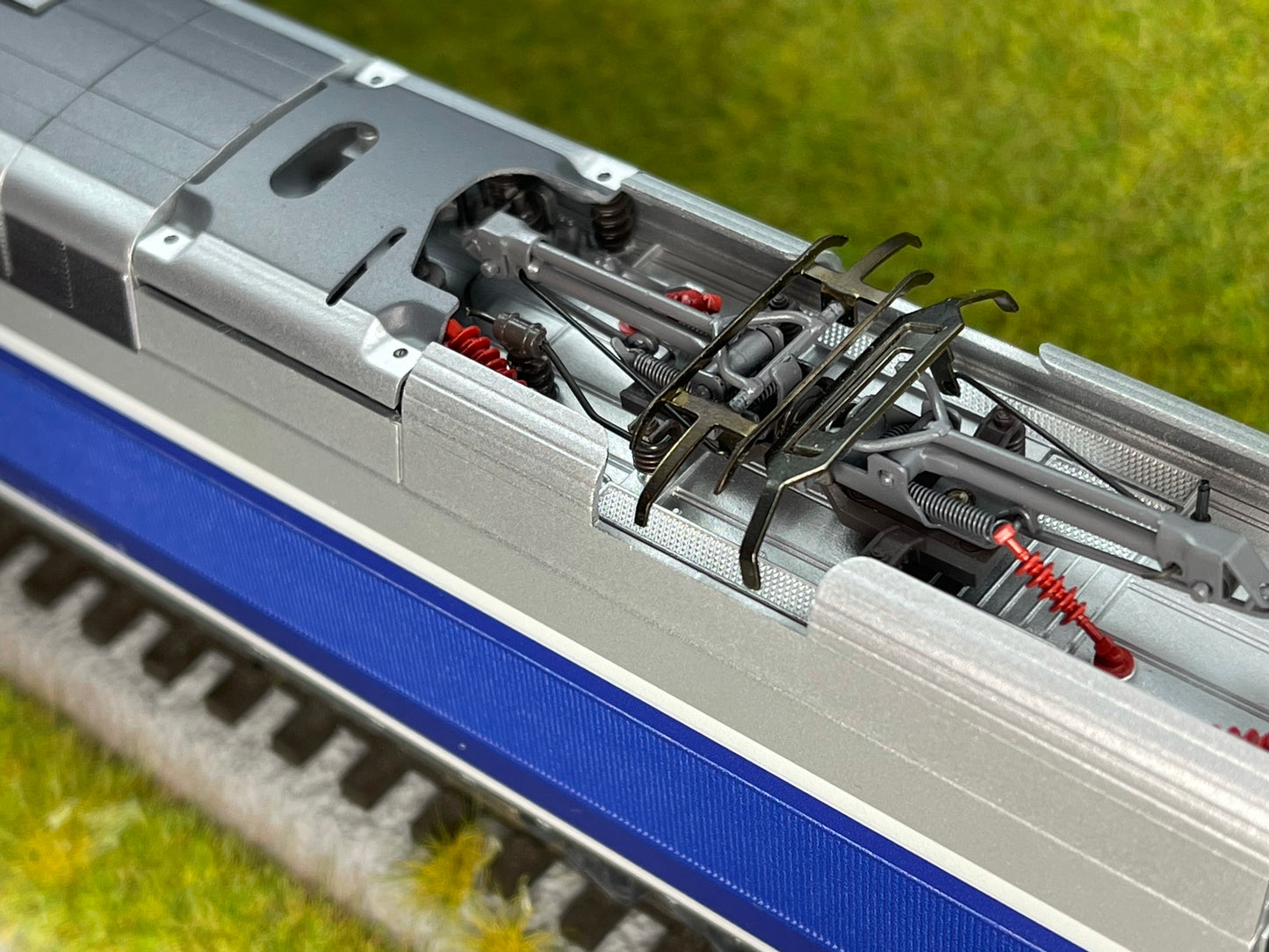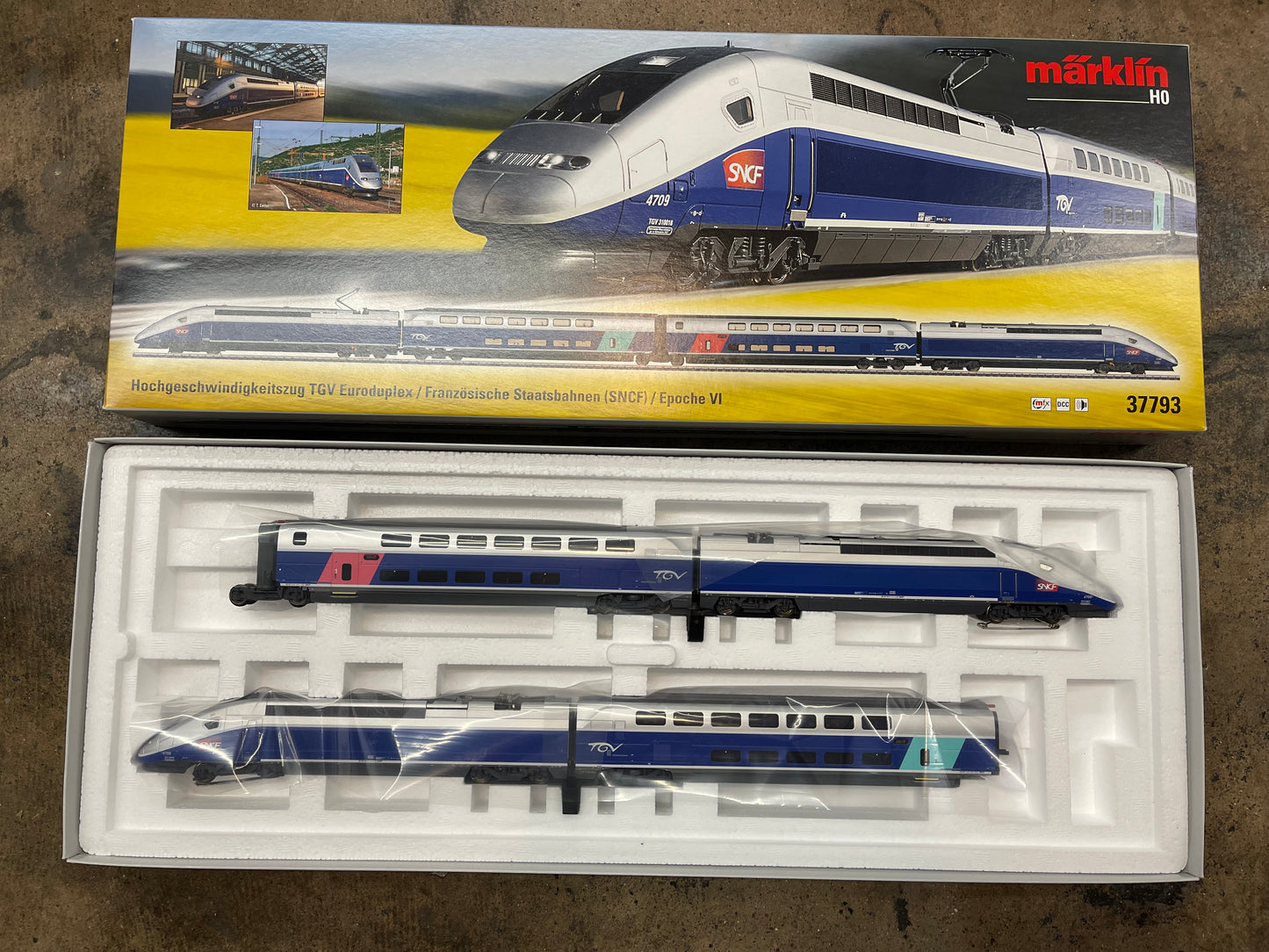Marklin 37793 - TGV Euroduplex High-Speed Train
Prototype: French State Railways (SNCF) TGV Euroduplex (train à grande vitesse) high-speed train, in the version for service between Paris and Munich. 2 powered end cars (TK1 and TK2), 1 bi-level transition car (R1), 1st class, 1 bi-level transition car (R8), 2nd class. Powered rail car train road number 4709. The train looks as it does in Era VI.
See the Marklin produced presentation of this model as video clip on youtube.
Model: This is 4-part basic set. Both end cars (TK1 and TK2) are powered. The train has an mfx+ digital decoder and extensive sound functions. It has controlled, high-efficiency propulsion in both powered end cars, centrally mounted. 4 axles powered using cardan shafts in each end car. Traction tires. The train has factory-installed interior lighting. The triple headlights and dual red marker lights change over with the direction of travel. They and the interior lighting will work in conventional operation and can be controlled digitally. The third headlight for the French headlight code can be turned off separately in digital operation (light function). Maintenance-free, warm white and red LEDs are used for the lighting. The cabs in the powered end cars have interior details. The train has separately applied metal grab irons. A powered end car and a transition car are permanently coupled together in pairs and have special close couplings with a guide mechanism. There is an additional guide mechanism in the Jakobs truck.
The end cars have a pickup shoe changeover feature so that the pickup shoe at the front of the train is the one picking up power. The interior lighting is powered through a continuous electrical connection through the entire train. Each powered end car has two single-arm pantographs in different versions with a contact strip on one for the DB and on the other for the SNCF. The pantographs work mechanically but are not wired to take power. The train is a scale reproduction. The minimum radius for operation is therefore 360 mm / 14-3/16", when there is sufficient clearance on both sides.
Length of the 4-part powered rail car train approximately 102 cm / 40-1/8".
Highlights
- Tooling change for the version as a TGV Euroduplex for the route Paris - Munich.
- Scale 1:87 reproduction.
- Factory-installed LED interior lighting.
- Extensive sound functions included.
- Both end cars powered.
Charlie's Tip
The 37793 basic set can be expanded to a prototypical 10-part unit with the 43423, 43433, and 43443 add-on sets. SNCF and TGV are registered trademarks of SNCF. TGV® is the property of SNCF. All rights reserved regarding reproduction.
This powered rail car train can be found in a DC version in the Trix H0 assortment at Ajckids.com under item number Trix 22381.
Publications
- New items brochure 2021Prototype information
As usual, a TGV Duplex also consists of two powered end cars and eight intermediate cars connected to each other by Jakobs trucks. The most striking feature was the new version of the powered end cars with rounded shapes, single-piece end windshield, engineer's control desk arranged in the center, and improved crash protection. The aerodynamic design of the new powered end car nose and the improved transition between the cars resulted now in only a 4% air resistance at a speed of 300 km/h / 188 mph compared to a normal single-level TGV. The intermediate cars are built mostly of aluminum extrusions in order not to exceed the permissible wheelset load of 17.5 metric tons. Many other small details such as seating reduced in weight, wiring with thinner sheathing, hollow wheelset axles, and altered brake disks contributed significantly to maintaining the permissible total weight.
With the beginning of the new millennium, the recognition prevailed at the SNCF that in the future TGV trains would be ordered from Alstom only with IGBT-controlled three-phase asynchronous propulsion technology and only in bi-level versions. In the summer, the SNCF ordered 55 sets of a third generation of bi-level TGV trains as the TGV Euroduplex/2N2. Here the intermediate cars underwent extensive overhauls and now offered a higher level of comfort including a modern passenger information system, accessibility for handicapped people, and wider corridors. These units (801-825, 4701-4730) are all equipped with three-system powered end cars (such as on the TGV POS). However, only the units 4701-4730 are equipped with the signal systems ERTMS-2, LZB-PZB, and Signum for service to Germany and Switzerland.
The other 25 bi-level TGV trains (units 801-825) were initially given powered end cars with only the signal technical equipment for French routes. They are given priority to replace old PSE sets on routes with high-volume demand. The powered end cars are however already equipped for the installation of train safety systems for use in Germany and Switzerland as the need arises. Follow-up orders for the construction of up to 71 additional trains (units 826-896) were given by the SNCF starting in the spring of 2012, most of which were delivered recently and which are to replace the TGV Atlantique in coming years.
Features
Warning
| Control Unit | Mobile Station | Mobile Station 2 | Central Station 1/2 | Central Station 3/2 | |
|---|---|---|---|---|---|
| Headlight(s) | X | X | X | X | X |
| Interior lights | X | X | X | X | X |
| Electric locomotive op. sounds | X | X | X | X | X |
| Horn blast 1 | X | X | X | X | X |
| Direct control | X | X | X | X | X |
| Sound of squealing brakes off | X | X | X | X | X |
| Light Function | X | X | X | X | |
| Horn blast 2 | X | X | X | X | |
| Conductor's Whistle | X | X | X | X | |
| Doors Closing | X | X | X | X | |
| Station Announcements | X | X | X | ||
| Stat. Announce. - French | X | X | X | ||
| Pantograph Sounds | X | X | X | ||
| Sanding | X | X | X | ||
| Blower motors | X | ||||
| Letting off Air | X | ||||
| Compressor | X | ||||
| Train announcement | X | ||||
| Surrounding sounds | X | ||||
| Station Announcements | X |


